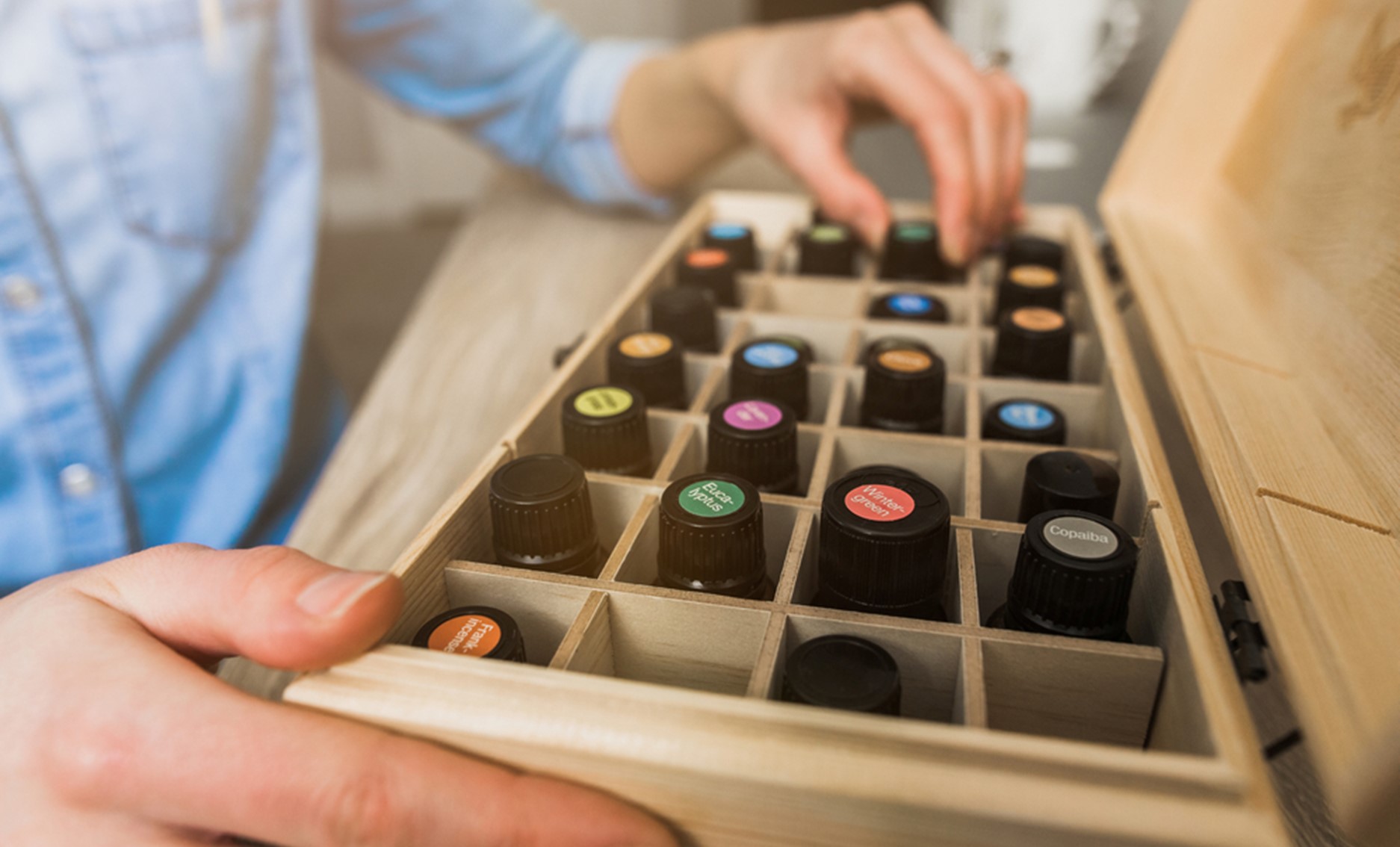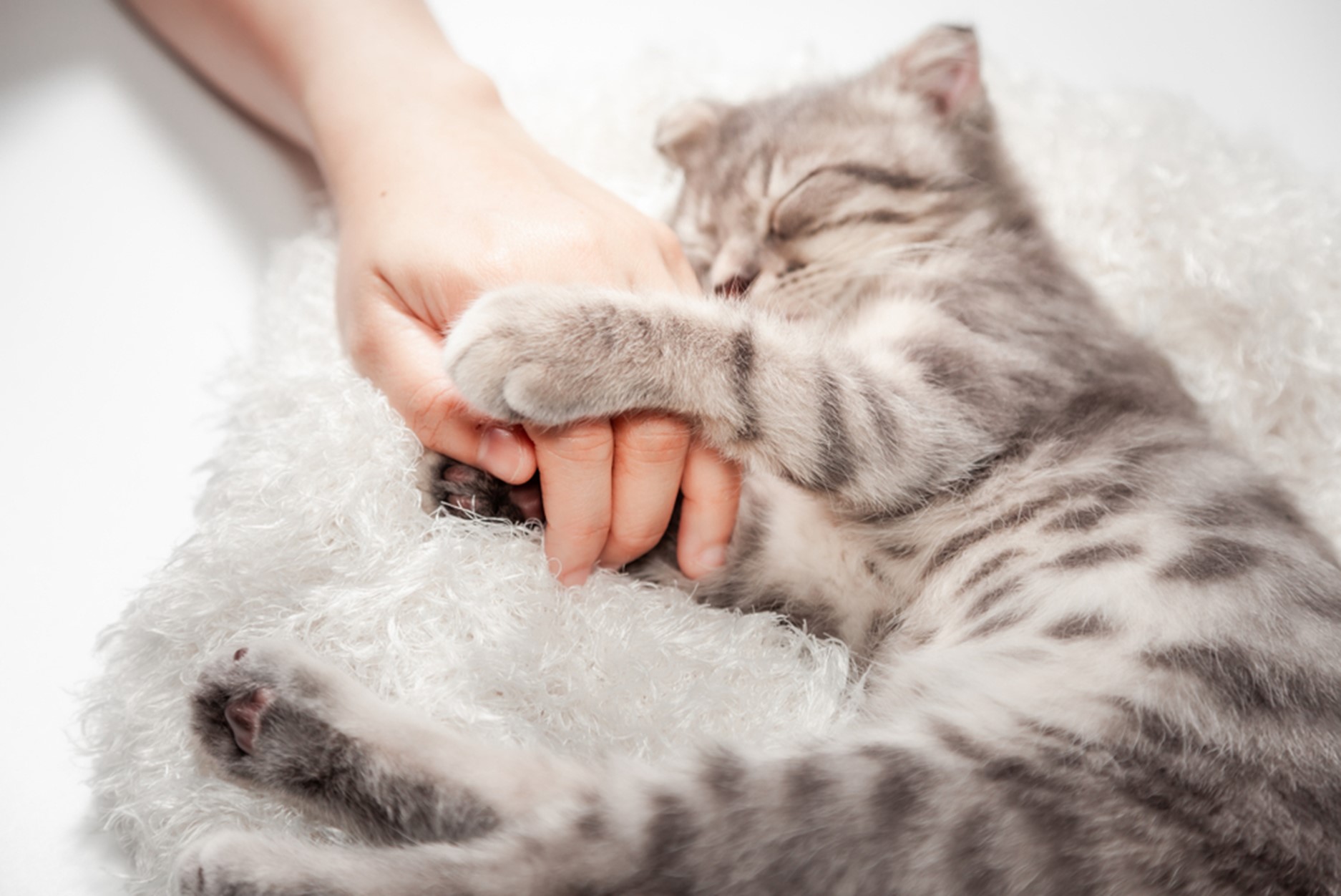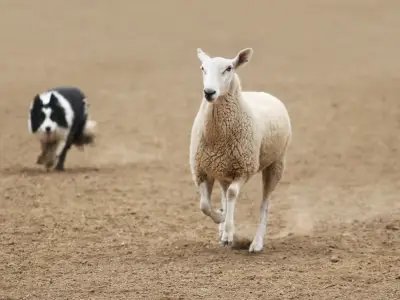As many of us embrace a more mindful and holistic approach to life, aromatherapy for dogs and other pets has become an area of interest for owners keen to take the natural approach to their animals' health and wellbeing. Aromatherapy is well-known for its ability to promote relaxation, and many different health issues in humans can be supported with the use of essential oils. The great news is that animals can respond just as well to some aromatic allies. From easing cat or dog behavioural issues to supporting an animal's immune system, careful use of essential oils can influence your pet's health at home. But what exactly are essential oils, and are they safe for us to use around animals?

What is an Essential Oil?
Have you ever leant into a bouquet of velvety rose blooms and breathed in that wonderfully powdery, floral scent? Or, as you've chopped up basil to make pesto, have you felt cheered by the fresh and peppery notes of the Mediterranean herb? These pleasant experiences are attributable to the essential oils held within certain cells of these plants.
Essential oils are chemicals created by some plant species. Though some plants contain essential oils across all their parts, these aromatic oils are sometimes only located in a particular region – such as its flowers, fruit or leaves.
Humans learnt to extract essential oils thousands of years ago. They used methods such as infusing scented plants into fats and later perfected the art of steam distillation, whereby steam is driven through aromatic plant matter, carrying the essential oil molecules with it. Once the steam cools and condenses, the essential oils float atop the water and can be siphoned off. The resultant essential oil has a highly potent scent.
A Powerful Scent

If we humans find a drop or two of essential oil to have a powerful aroma, imagine how a dog perceives this scent. A dog's nose is estimated to be 10,000 -100,000 times more sensitive than our own, which you must consider when using essential oils in the home. Dogs aren't the only pets with super-sensitive noses. Cats, hamsters and rabbits all have a sense of smell far more acute than ours.
You've probably encountered a strong scent before that has left you feeling nauseous or agitated. To prevent distress in pets, you should work at very low dilutions, ensuring they have a pleasant aromatic experience rather than an overpowering one.
It's really simple to dilute essential oils when adding them to a medium such as a carrier oil or water. However, many people ask are aromatherapy diffusers safe for dogs and other pets? This is an important question in terms of potentially toxic essential oils and the strength of scent emitted from a diffuser. Although much of the information you'll find online about essential oil toxicity for animals relates to the ingestion of that oil, it's important to remember that when you diffuse an essential oil, the molecules are still entering your pet's body when they inhale these highly volatile compounds from the air.
Once you've discovered which essential oils are safe to use around the pet you share your home with, it's wise to use just one drop of essential oil in your diffuser.
Are Some Essential Oils Unsafe for Animals?
No essential oil should ever be added to an animal's food or drink. Some medications prescribed by vets contain essential oils, but these are carefully formulated to protect the digestive tract.
Although essential oils are a natural product, they are highly concentrated, and the levels of some chemicals within certain essential oils could pose a risk to your animal's health. If you're practising dog aromatherapy at home, signs that your pet is experiencing essential oil toxicity include drooling, lethargy, runny nose, streaming eyes, poor coordination and vomiting.
Most important for the pet owner to know, there are a range of commonly used essential oils which are unsafe for your animal. These include:
- Basil – popular for its uplifting scent, this essential oil poses a particular risk to dogs.
- Citronella – commonly diffused in the summer to keep insects out of homes, it should be avoided if you have pets in the house.
- Eucalyptus – which is a favourite aromatherapy choice for congestion, eucalyptus can be toxic to cats, dogs and other pets.
- Grapefruit, lemon and lime – these citrus essential oils shouldn't be applied to short-haired or hairless pets because they make the skin more sensitive to the effects of sunlight.
- Peppermint – an essential oil renowned for its invigorating scent, it should be avoided for dogs and smaller animals.
- Pine – often used by aromatherapy enthusiasts for disinfecting around the home, this essential oil could pose a health risk to animals – especially dogs.
- Rosemary – though this essential oil is a wonder remedy for hair growth, it shouldn't be used around pregnant animals or those with epilepsy.
- Tea tree – cats can experience extreme toxicity from this essential oil, and keeping this away from all pets is advisable.
Which Essential Oils are Safe for Animals?
Research is key when it comes to using essential oils for your beloved pet. If your animal has any diagnosed health issues or may be pregnant, you should always speak to a vet before using aromatherapy.
Searching for cat or dog-friendly essential oils is a great place to start online, but once you've found one source of information, confirm this from at least two more reputable sources. You'll find plenty of evidence to support the safe use of bergamot, cedarwood, frankincense, German chamomile, ginger, lavender, myrrh, patchouli and Roman chamomile essential oils for dogs. There is also good evidence that frankincense, German chamomile, lavender and Roman chamomile essential oils are safe for cats.
Don't worry if you can confirm only a small list of safe essential oils for your pet! Each essential oil exhibits many different therapeutic actions. An oil such as lavender could be used to address anxiety, inflamed/itchy skin and fleas.
How Can I Use Essential Oils for Animals?

If you've found some animal-safe essential oils to use with your pet, using a diffuser is the safest way to work with these. You can add relaxing essential oils such as frankincense, lavender or Roman chamomile to a diffuser before you leave your pet alone if they get anxious in your absence or when there are household changes that are stressing the pet – such as a new baby, a new pet or construction work. You can also use a diffuser to deliver immune-supporting essential oils such as bergamot and frankincense. Always ensure your pet is able to move away from the scent whenever they wish, with access to fresh air or another room.
The topical use of essential oils may be possible if you use a very low dilution of essential oils in your chosen medium. When you're new to working with essential oils for pets, starting at a dilution of 0.25-0.5% is advisable. The simplest way to apply essential oil to your pet's skin is by adding it to a pet-safe carrier oil, such as coconut, sunflower and sweet almond. You can work this into the skin to address common skin complaints or other health issues. Ensure your pet is happy with a scent before putting it onto them. You can test their response to oils by placing the diluted mixture on a piece of cloth and seeing if your pet moves closer to it or away from it.
If you’d like to learn more, our Essential Oils for Children and Animals Diploma Course is currently available for just £29 for a limited time (reduced from £127).




